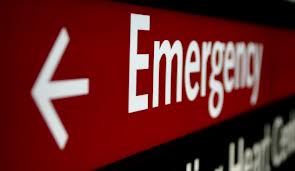Good control of diabetes is essential to the prevention of hyperglycemia, hypoglycemia, ketoacidosis, and hyperosmolar coma.
Type 1 diabetics with no production of insulin from their own body and type 2 diabetics with no sensitivity to insulin have the possibility of suffering from emergencies linked to diabetes, like severe hypoglycemia, ketoacidosis, and hyperosmolar coma which are potentially fatal conditions. Therefore, it is important to know their causes and be able to detect them quickly so as to reduce the chances of such emergencies occurring.
Diabetic Emergency: Severe Hypoglycemia
This diabetic complication, which is often referred to as low blood glucose, can happen to any diabetic even when your diabetes is being managed properly. Below are several symptoms that are observed when severe hypoglycemia happens.
- Perspiration
- Shakiness
- Seizures
- Pale skin
- Hunger
- Headache
- Dizziness
- Unsteady movements or clumsiness
- Inability to pay attention and confusion
- Sudden changes of mood, like laughter without any reason
- A tingling feeling at the mouth
A blood sugar test is the only method of confirming severe hypoglycemia. For the treatment of severe hypoglycemia, the use of any form of sugar which can be hard candy, fruit juice or glucose tablets, is the quickest method. To avoid severe hypoglycemia, you have to control your blood sugar levels well and know its symptoms so that treatment can be given before it becomes an emergency.
Diabetic Emergencies – Video Guide
Diabetic Emergency: Hyperglycemia
Hyperglycemia, or blood glucose levels which are too high, can happen to any diabetic. It can occur if there is overeating or stress. The symptoms can be:
- Extreme thirst
- Dry, warm skin
- Excessive urine
- High sugar level in the urine
Good control of your blood glucose levels is the best method of prevention.
Diabetic Emergency: Ketoacidosis
Ketoacidosis usually occurs among type 1 diabetics. Since it can lead to diabetic coma, it is considered a dangerous condition. It happens due to an excessive quantity of ketones in the bloodstream. Ketones, which are acids, are produced when fats are used by the body for energy due to no insulin production or insulin insensitivity of the cells resulting in the inability of using blood sugar for energy. When there is an increase in the level of ketones, ketoacidosis symptoms are:
- Thirst and a dry mouth

- Excessive urine
- High levels of blood glucose
- Excessive ketones in the urine
- Tiredness
- Dry or flushed skin
- Breathing difficulties
- A fruity Breath
- Inability to pay attention or confusion
- Vomiting which is an indication that ketoacidosis have reached the stage in which it can be fatal
Good control of your blood glucose levels is the best method of prevention for ketoacidosis. Recognize all the warning sign of ketoacidosis and regularly monitor your blood and urine to avoid this kind of emergency.
Diabetic Emergency: Hyperosmolar Hyperglycemic Nonketotic Syndrome
Hyperosmolar hyperglycemic nonketotic syndrome (HHNS) can result from a sickness or an infection which raises your blood glucose level. Although it can occur among both type 1 and type 2 diabetics, it is usually the type 2 diabetics who suffer from it. When the body attempts to get rid of the excess blood sugar during HHNS, it produces more urine and passes out the sugar together with urine frequently. With so much urine expelled, dehydration follows. Seizures, then hyperosmolar coma and eventually death occur when HHNS is left untreated. Just before the occurrence of hyperosmolar coma, the following warning symptoms may be observed:
- Vision loss
- Hallucinations
- Extreme thirst
- Dry, parched skin
- Skin warm although there is no perspiration
- Level of blood sugar exceeding 600 mg/dL
- Weakness on only the left or the right side of the body
Hyperosmolar coma and HHNS can be prevented through the frequent monitoring of the blood sugar, as advised by the doctor. If you are sick, monitor your blood glucose more frequently and have an hourly glass of caffeine-and-alcohol-free liquid to prevent hyperosmolar coma.
To avoid getting diabetic emergencies like hyperglycemia, hypoglycemia, hyperosmolar coma and ketoscidosis, make sure that your blood glucose levels are within the normal range. If you do not know how to do this, or are not sure how to monitor, always seek the help of your doctor immediately.